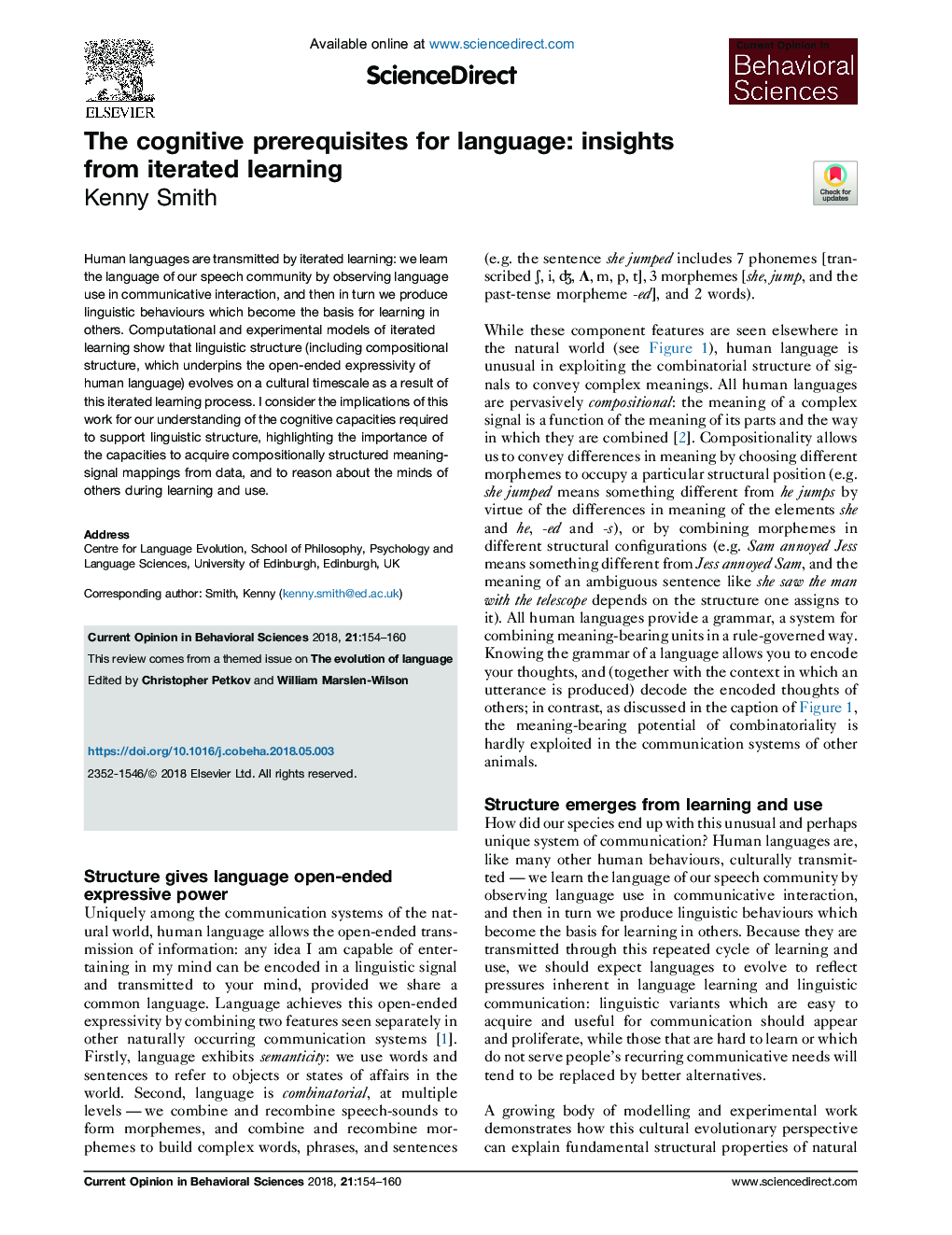| Article ID | Journal | Published Year | Pages | File Type |
|---|---|---|---|---|
| 8838118 | Current Opinion in Behavioral Sciences | 2018 | 7 Pages |
Abstract
Human languages are transmitted by iterated learning: we learn the language of our speech community by observing language use in communicative interaction, and then in turn we produce linguistic behaviours which become the basis for learning in others. Computational and experimental models of iterated learning show that linguistic structure (including compositional structure, which underpins the open-ended expressivity of human language) evolves on a cultural timescale as a result of this iterated learning process. I consider the implications of this work for our understanding of the cognitive capacities required to support linguistic structure, highlighting the importance of the capacities to acquire compositionally structured meaning-signal mappings from data, and to reason about the minds of others during learning and use.
Related Topics
Life Sciences
Neuroscience
Behavioral Neuroscience
Authors
Kenny Smith,
